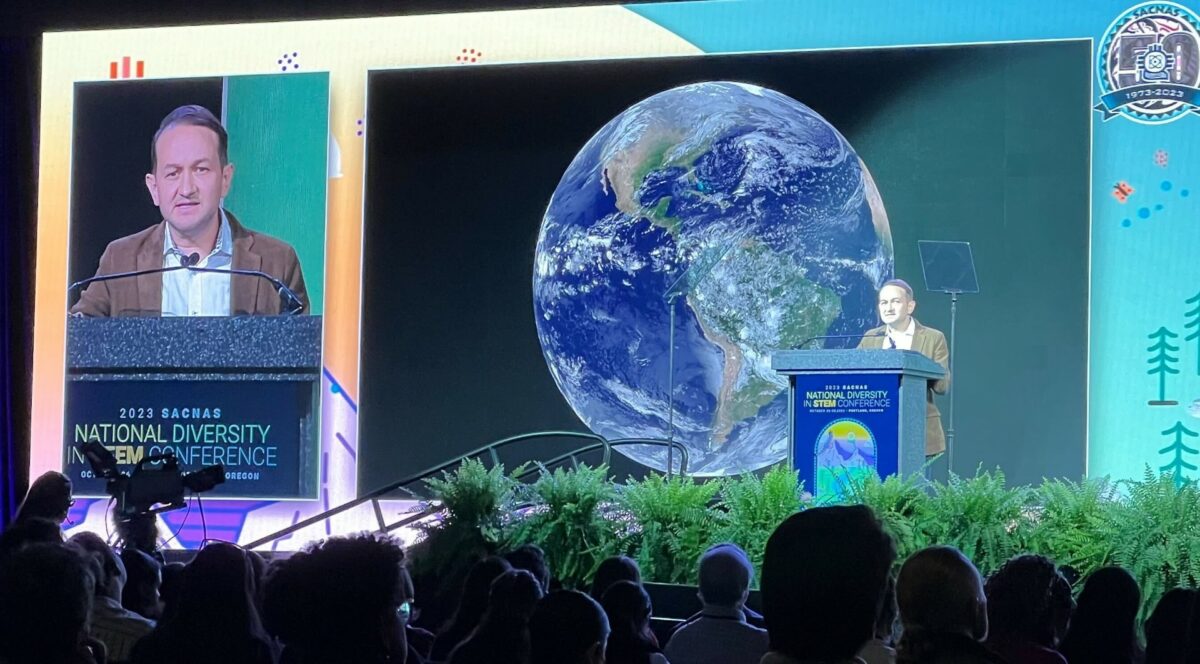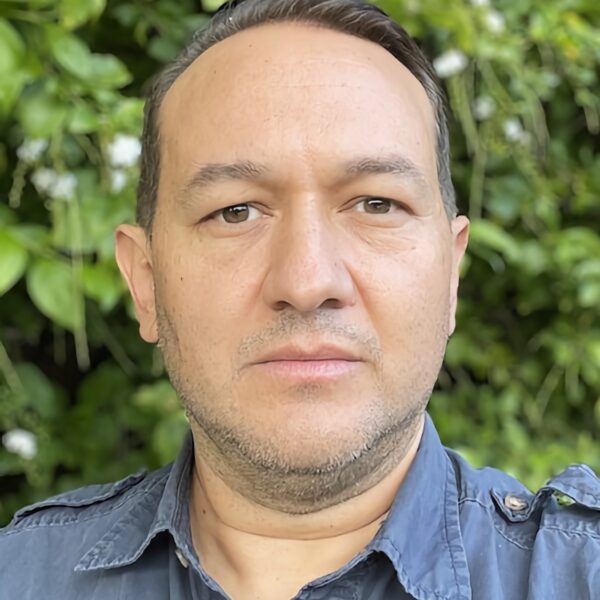
The power of the tropics
I am an associate professor in the Department of Ecology and Evolutionary Biology and co-director of the Center for Tropical Research in the Institute of the Environment and Sustainability. I…
The National Diversity in STEM Conference is the largest multidisciplinary and multicultural STEM event in the United States. It equips, empowers and energizes participants for their academic and professional paths in STEM. This year’s conference in Portland, Oregon was attended by more than 4,000.
I am an associate professor in the Department of Ecology and Evolutionary Biology and co-director of the Center for Tropical Research in the Institute of the Environment and Sustainability. I was invited as keynote featured speaker and gave a talk about my research, upbringing and path in STEM.
The following is my keynote speech at the 2023 National Diversity in STEM conference hosted by the Society for Advancement of Chicanos/Hispanics & Native Americans in Science (SACNAS).
When I tell people I’m an evolutionary biologist, some imagine I study dinosaurs or the evolution of humans. But I study something more beautiful and amazing — the evolution of plants.
We see plants almost everywhere, but few people realize that plants have been on Earth for almost 500 million years. They produce the oxygen we breathe, and the history of our cultures is linked to the use and domestication of some plants.
Today, I will tell you three short stories that weave my research about the origin and evolution of plants, my life, and all of us, the SACNAS community.
The first story is about diversity or biodiversity, which means the different types of organisms or species we see in nature.
If we look at a map of biodiversity, we see that tropical regions have high levels of biodiversity for different groups of organisms — plants, birds, mammals and insects.
A key question in evolutionary biology is: Where does biodiversity come from? How does it happen as it does?
A useful framework to answer this question is provided by the hypothesis that “diversity begets diversity.” By this, I mean there is a positive correlation between two ways to think about diversity. For example, places that have more species diversity for a given group may stimulate the generation of more species diversity in another group.
I have tested this hypothesis in several places. In the tropical Andes, I showed that the high diversity of climates and the rugged topography of this region work as engines to stimulate the formation of plant species. In the Amazon, I have studied how the diversity of insects and their interactions with plants may promote the evolution of new plant species.
My fascination with biodiversity comes from my upbringing in Colombia and from being exposed to the amazing biodiversity of the tropics all my life.
Colombia is also diverse culturally. I am proud to say that I am the product of the exchange among these diverse cultures. I believe that this mix of cultures and the environments in which I grew up have given me a unique view of the world that illuminates my research daily.
Here at this SACNAS conference, we are all diverse. We have different backgrounds, different histories and different lived experiences.
I believe that this diversity is what makes us unique, special and important in science, because we bring diverse ideas, perspectives and solutions to tackle some of the major scientific problems of our fields.
Diversity begets diversity.
The second story is about migration. Growing up in the Andes, a simple observation is that when one hikes up a mountain, plant diversity changes. One finds only some species growing at low elevations, other species at middle elevations, and so on. This pattern is repeated in all tropical mountains.
A major question in biology is: How does this happen? Where do organisms come from and how do they move to colonize particular regions?
One way to answer this question is the hypothesis that “it is easier to move than to evolve.” By this, I mean that, for some organisms, maybe it’s easier to move and track the conditions where they survive than trying to evolve and adapt to new conditions they have not experienced before.
I have been studying this phenomenon with different plants. Recently, I tested this idea with plants from tropical mountains worldwide and showed that, indeed, these plants are adapted to very specific climactic conditions. They track these conditions and disperse across mountains instead of evolving and colonizing new places with new climactic conditions.
I have also moved. I migrated to the U.S. to pursue grad school and then moved around as a postdoctoral researcher until I secured my faculty position at UCLA.
These migrations were key to my life and my career. I went places that gave me the opportunity to thrive with the support of my mentors and the network of colleagues who have supported me throughout my career. Migrating was the best thing that could have ever happened to me.
Here at this SACNAS conference, we are all migrants in one way or another. Some of you may also be first generation migrants like me. For others, it was your parents or grandparents who migrated for different reasons. I believe that moving to new places, finding supportive mentors and having a network like the SACNAS community is critical for our success. Don’t be afraid to move. Migration helps us grow.
Sometimes, it’s easier to move than to evolve.
The last story is about adaptation. Growing up in the tropics, I was exposed to extreme ecosystems with very different organisms which have evolved unique adaptations to deal with the conditions in such habitats.
A big question in biology is: How do organisms evolve adaptations?
An interesting way to answer this is by flipping the hypothesis that “it is easier to move than to evolve” and test whether, for some organisms, it’s actually easier to evolve and adapt to new conditions than to move.
I have studied this phenomenon in different places. Recently, I studied how cactus in the Galápagos Islands have evolved and adapted to this new habitat. The Galápagos Islands are relatively recent in geological time and are very harsh volcanic islands.
By studying the ecological and genomic bases of adaptation, we are finding that the adaptations of these resilient plants are linked to their interaction with the finches that inspired Charles Darwin in the development of the theory of evolution by natural selection.
I am now part of the academic environment. It is a “harsh” environment where I did not belong, where I am in the minority — but I have adapted to it.
I believe my diverse background and upbringing have given me the resilience to adapt and thrive in this new environment and be a successful researcher.
Again, this is all of us at this conference. We may be minorities in STEM and in the U.S., but we are majorities in our communities. I believe that our diverse backgrounds and personal histories give us the resilience to make us strong to survive and adapt to the academic environment where we are not the majority in the U.S. — at least today.
Sometimes, it’s easier to evolve than to move.




